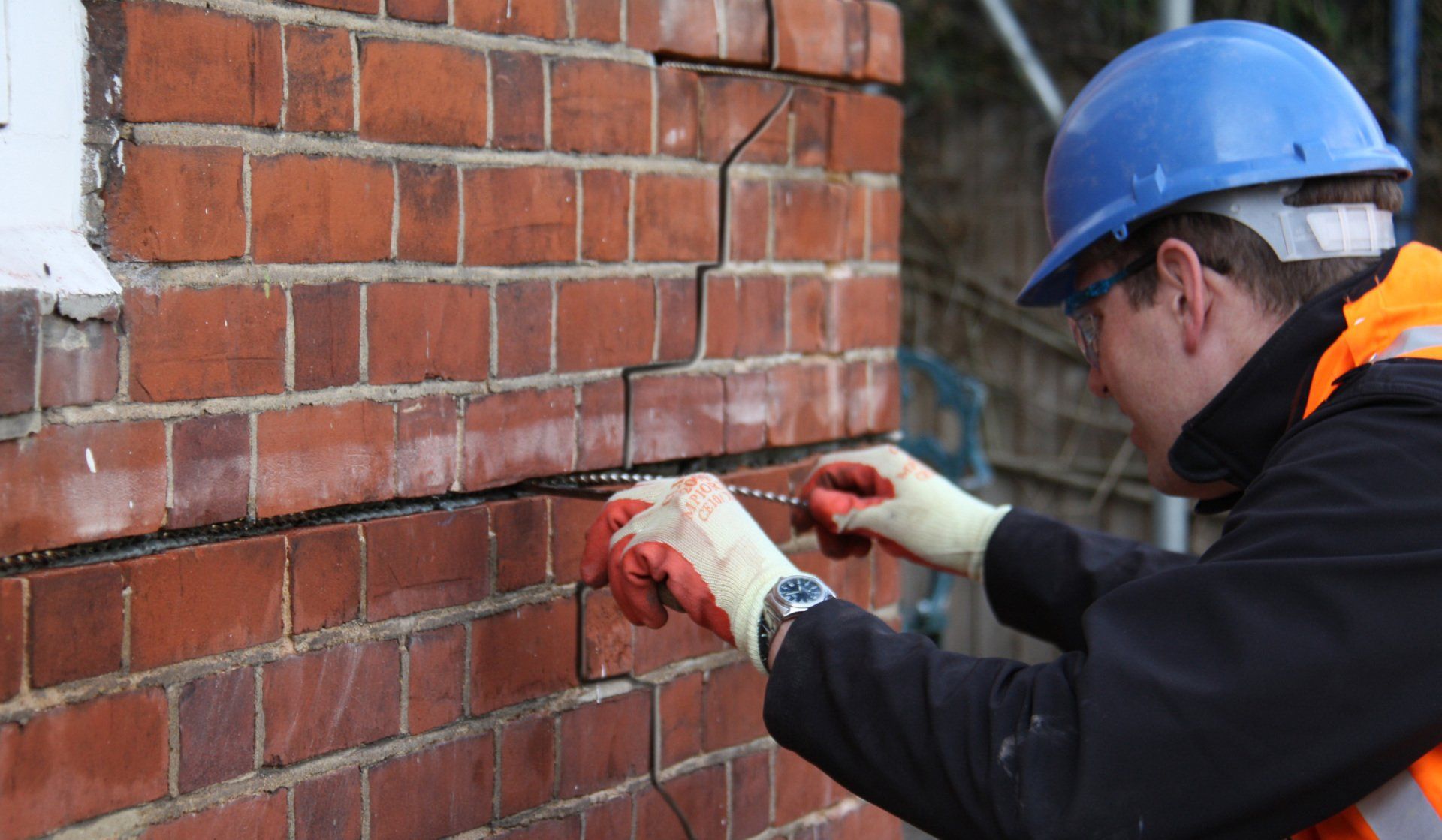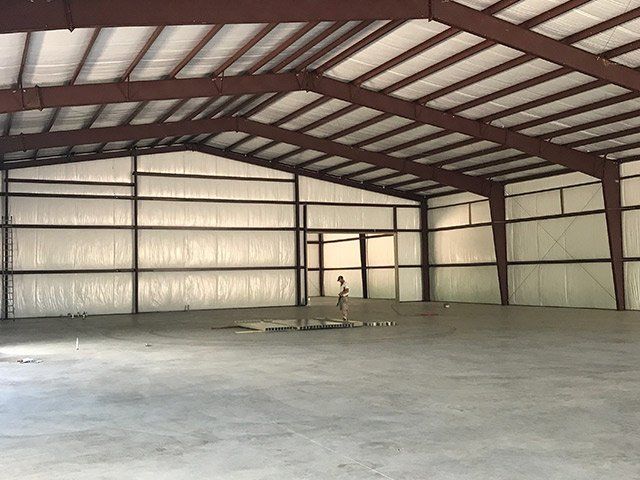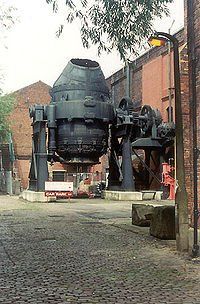BLOG
Latest News

By Madi Bolourchi
•
15 Jun, 2020
Cracks in walls! You need a structural engineer to inspect the cracks. Cracks in walls can be of a concern, but not every crack is structurally significant. Generally, when you see cracking on a wall in property , they could have been caused due to a variety of reasons. When a client appoint a structural engineer to survey a property when it is bought or sold, then the cracks on a wall or around a window in a wall or in a ceiling etc can be identified. Cracking to a property can be caused due to the following reasons,: - Excessive stress on the structure, locally or throughout the building. - Leaking drains causing the foundations to move. This is called subsidence, which is a movement caused by volumetric change of soild under the foundations which in turn will cause teh walls above to move and crack. - Corrosion of ties in a cavity wall. - Expansion and shrinkage of materials in a building. - Lack of fit, poor construction methods. - Accidental causes. - And many other factors that could be identified when a chartered structural engineer inspect the property. Who to appoint to inspect the property? A chartered structural engineer is required to inspect the cracking that is causing concerned. The structural engineer will assess the condition of the wall/walls and the extent of damage caused by cracking. It may be possible to determine the cause and specify remedial works required straight away, but at times there may need to monitor the cracks for a certain period to determine if the movement causing the cracks is continuing. The underlying cause of cracking to the structure will be identified by the structural engineer, a report will be prepared, and within the report, the remedial works required shall be recommended For further information on structural inspection of properties please contact Bolourchi Ltd at 07884004000 or email info@bolourchi.co.uk

By Madi Bolourchi
•
15 Jun, 2020
This educational information was copied from Wikipedia. Structural engineering is a sub-discipline of civil engineering in which structural engineers are trained to design the 'bones and muscles' that create the form and shape of man made structures. Structural engineers need to understand and calculate the stability, strength and rigidity of built structures for buildings[1] and nonbuilding structures. The structural designs are integrated with those of other designers such as architects and building services engineer and often supervise the construction of projects by contractors on site.[2] They can also be involved in the design of machinery, medical equipment, and vehicles where structural integrity affects functioning and safety. See glossary of structural engineering. Structural engineering theory is based upon applied physical laws and empirical knowledge of the structural performance of different materials and geometries. Structural engineering design uses a number of relatively simple structural concepts to build complex structural systems. Structural engineers are responsible for making creative and efficient use of funds, structural elements and materials to achieve these goals.[2] History of structural engineering Pont du Gard, France, a Roman era aqueduct circa 19 BC. Structural engineering dates back to 2700 B.C.E. when the step pyramid for Pharaoh Djoser was built by Imhotep, the first engineer in history known by name. Pyramids were the most common major structures built by ancient civilizations because the structural form of a pyramid is inherently stable and can be almost infinitely scaled (as opposed to most other structural forms, which cannot be linearly increased in size in proportion to increased loads).[3] The structural stability of the pyramid, whilst primarily gained from its shape, relies also on the strength of the stone from which it is constructed, and its ability to support the weight of the stone above it.[4] The limestone blocks were often taken from a quarry near the build site and have a compressive strength from 30 to 250 MPa (MPa = Pa × 106).[5] Therefore, the structural strength of the pyramid stems from the material properties of the stones from which it was built rather than the pyramid's geometry. Throughout ancient and medieval history most architectural design and construction was carried out by artisans, such as stonemasons and carpenters, rising to the role of master builder. No theory of structures existed, and understanding of how structures stood up was extremely limited, and based almost entirely on empirical evidence of 'what had worked before'. Knowledge was retained by guilds and seldom supplanted by advances. Structures were repetitive, and increases in scale were incremental.[3] No record exists of the first calculations of the strength of structural members or the behavior of structural material, but the profession of structural engineer only really took shape with the Industrial Revolution and the re-invention of concrete (see History of Concrete. The physical sciences underlying structural engineering began to be understood in the Renaissance and have since developed into computer-based applications pioneered in the 1970s.[6] Timeline Galileo Galilei published the book Two New Sciences in which he examined the failure of simple structures Isaac Newton published Philosophiae Naturalis Principia Mathematica which contains the Newton's laws of motion Leonhard Euler developed the theory of buckling of columns 1452–1519 Leonardo da Vinci made many contributions 1638: Galileo Galilei published the book Two New Sciences in which he examined the failure of simple 1660: Hooke's law by Robert Hooke 1687: Isaac Newton published Philosophiæ Naturalis Principia Mathematica which contains the Newton's laws of motion 1750: Euler–Bernoulli beam equation 1700–1782: Daniel Bernoulli introduced the principle of virtual work 1707–1783: Leonhard Euler developed the theory of buckling of columns 1826: Claude-Louis Navier published a treatise on the elastic behaviors of structures 1873: Carlo Alberto Castigliano presented his dissertation "Intorno ai sistemi elastici", which contains his theorem for computing displacement as partial derivative of the strain energy. This theorem includes the method of "least work" as a special case 1874: Otto Mohr formalized the idea of a statically indeterminate structure. 1922: Timoshenko corrects the Euler-Bernoulli beam equation 1936: Hardy Cross' publication of the moment distribution method, an important innovation in the design of continuous frames. 1941: Alexander Hrennikoff solved the discretization of plane elasticity problems using a lattice framework 1942: R. Courant divided a domain into finite subregions 1956: J. Turner, R. W. Clough, H. C. Martin, and L. J. Topp's paper on the "Stiffness and Deflection of Complex Structures" introduces the name "finite-element method" and is widely recognized as the first comprehensive treatment of the method as it is known today Structural failure Main articles: Structural failure and List of structural failures and collapses The history of structural engineering contains many collapses and failures. Sometimes this is due to obvious negligence, as in the case of the Pétion-Ville school collapse, in which Rev. Fortin Augustin "constructed the building all by himself, saying he didn't need an engineer as he had good knowledge of construction" following a partial collapse of the three-story schoolhouse that sent neighbors fleeing. The final collapse killed 94 people, mostly children. In other cases structural failures require careful study, and the results of these inquiries have resulted in improved practices and greater understanding of the science of structural engineering. Some such studies are the result of forensic engineering investigations where the original engineer seems to have done everything in accordance with the state of the profession and acceptable practice yet a failure still eventuated. A famous case of structural knowledge and practice being advanced in this manner can be found in a series of failures involving box girders which collapsed in Australia during the 1970s. Structural engineering theory Figure of a bolt in shear stress. Top figure illustrates single shear, bottom figure illustrates double shear. Structural engineering depends upon a detailed knowledge of applied mechanics, materials science and applied mathematics to understand and predict how structures support and resist self-weight and imposed loads. To apply the knowledge successfully a structural engineer generally requires detailed knowledge of relevant empirical and theoretical design codes, the techniques of structural analysis, as well as some knowledge of the corrosion resistance of the materials and structures, especially when those structures are exposed to the external environment. Since the 1990s, specialist software has become available to aid in the design of structures, with the functionality to assist in the drawing, analyzing and designing of structures with maximum precision; examples include AutoCAD, StaadPro, ETABS, Prokon, Revit Structure, Inducta RCB, etc. Such software may also take into consideration environmental loads, such as from earthquakes and winds. Profession Structural engineers are responsible for engineering design and structural analysis. Entry-level structural engineers may design the individual structural elements of a structure, such as the beams and columns of a building. More experienced engineers may be responsible for the structural design and integrity of an entire system, such as a building. Structural engineers often specialize in particular types of structures, such as buildings, bridges, pipelines, industrial, tunnels, vehicles, ships, aircraft and spacecraft. Structural engineers who specialize in buildings often specialize in particular construction materials such as concrete, steel, wood, masonry, alloys and composites, and may focus on particular types of buildings such as offices, schools, hospitals, residential, and so forth. Structural engineering has existed since humans first started to construct their own structures. It became a more defined and formalized profession with the emergence of the architecture as distinct profession from the engineering during the industrial revolution in the late 19th century. Until then, the architect and the structural engineer were usually one and the same thing – the master builder. Only with the development of specialized knowledge of structural theories that emerged during the 19th and early 20th centuries, did the professional structural engineers come into existence. The role of a structural engineer today involves a significant understanding of both static and dynamic loading, and the structures that are available to resist them. The complexity of modern structures often requires a great deal of creativity from the engineer in order to ensure the structures support and resist the loads they are subjected to. A structural engineer will typically have a four or five year undergraduate degree, followed by a minimum of three years of professional practice before being considered fully qualified. Structural engineers are licensed or accredited by different learned societies and regulatory bodies around the world (for example, the Institution of Structural Engineers in the UK). Depending on the degree course they have studied and/or the jurisdiction they are seeking licensure in, they may be accredited (or licensed) as just structural engineers, or as civil engineers, or as both civil and structural engineers. Another international organisation is IABSE(International Association for Bridge and Structural Engineering).[7] The aim of that association is to exchange knowledge and to advance the practice of structural engineering worldwide in the service of the profession and society. Specializations Building structures Sydney Opera House, designed by Architect Jørn Utzon and structural design by Ove Arup & Partners Millennium Dome in London, UK, by Richard Rogers and Buro Happold Burj Khalifa, in Dubai, the world's tallest building, shown under construction in 2007 (since completed) Structural building engineering includes all structural engineering related to the design of buildings. It is a branch of structural engineering closely affiliated with architecture. Structural building engineering is primarily driven by the creative manipulation of materials and forms and the underlying mathematical and scientific ideas to achieve an end which fulfills its functional requirements and is structurally safe when subjected to all the loads it could reasonably be expected to experience. This is subtly different from architectural design, which is driven by the creative manipulation of materials and forms, mass, space, volume, texture and light to achieve an end which is aesthetic, functional and often artistic. The architect is usually the lead designer on buildings, with a structural engineer employed as a sub-consultant. The degree to which each discipline actually leads the design depends heavily on the type of structure. Many structures are structurally simple and led by architecture, such as multi-storey office buildings and housing, while other structures, such as tensile structures, shells and gridshells are heavily dependent on their form for their strength, and the engineer may have a more significant influence on the form, and hence much of the aesthetic, than the architect. The structural design for a building must ensure that the building is able to stand up safely, able to function without excessive deflections or movements which may cause fatigue of structural elements, cracking or failure of fixtures, fittings or partitions, or discomfort for occupants. It must account for movements and forces due to temperature, creep, cracking and imposed loads. It must also ensure that the design is practically buildable within acceptable manufacturing tolerances of the materials. It must allow the architecture to work, and the building services to fit within the building and function (air conditioning, ventilation, smoke extract, electrics, lighting etc.). The structural design of a modern building can be extremely complex, and often requires a large team to complete. Structural engineering specialties for buildings include: Earthquake engineering Façade engineering Fire engineering Roof engineering Tower engineering Wind engineering For further information on structural engineering please contact Bolourchi Ltd on 07884004000.

By Madi Bolourchi
•
22 May, 2020
Please note this educational information has been copied from https://www.gov.uk/guidance/party-wall-etc-act-1996-guidance: The Party Wall etc Act 1996 provides a framework for preventing and resolving disputes in relation to party walls, boundary walls and excavations near neighbouring buildings. A building owner proposing to start work covered by the Act must give adjoining owners notice of their intentions in the way set down in the Act. Adjoining owners can agree or disagree with what is proposed. Where they disagree, the Act provides a mechanism for resolving disputes. The Act is separate from obtaining planning permission or building regulations approval. What is a party wall? The main types of party walls are: - a wall that stands on the lands of 2 (or more) owners and forms part of a building - this wall can be part of one building only or separate buildings belonging to different owners - a wall that stands on the lands of 2 owners but does not form part of a building, such as a garden wall but not including timber fences - a wall that is on one owner’s land but is used by 2 (or more) owners to separate their buildings The Act also uses the expression ‘party structure’. This could be a wall or floor partition or other structure separating buildings or parts of buildings in different ownership, such as in flats. What the Act covers? The Act covers: -new building on or at the boundary of 2 properties -work to an existing party wall or party structure -excavation near to and below the foundation level of neighbouring buildings This may include: -building a new wall on or at the boundary of 2 properties -cutting into a party wall -making a party wall taller, shorter or deeper -removing chimney breasts from a party wall -knocking down and rebuilding a party wall -digging below the foundation level of a neighbour’s property Please contact Bolourchi Ltd on 07884004000 to discuss your requirements.

By Madi Bolourchi
•
22 May, 2020
What is a Structural Inspection? A structural inspection is visiting a property that could have any defects and preparing a report on the structural condition of the property. An inspection could be a visual inspection or a detailed intrusive inspection. These inspections are typically performed by a chartered engineer who is a member of the Institution of Structural Engineers or the Institution of Civil Engineers. A structural inspection and report focuses on all the structural elements of a building. They are generally roof , lintels, floors, walls, foundations and any other structural parts of a property. Home buyers could require structural inspection of a property as well anyone that need to refurbish or develop an existing property. This property could be a commercial, retail, educational or a residential At the Oldship hotel in Brighton for example, we were appointed to prepare a visual structural report on the condition of the facade and preparation of the remedial works required. Our clients could be private house owners, solicitors, commercial property owners, shop oners, banks and mortgage lenders, etc... When to have a Structural Inspection? If you intend to alter or refurbish a property, or purchase a property, you may require a structural inspection the property. Anything from removing a wall, or chimney or loft conversions, etc is likely to require a structural inspection. I f you notice any cracks are appearing on a wall or around a window frame or lintels, then you might want to arrange for a structural engineer to visit and inspect the areas in concern. Structural engineers can also prepare reports on flood, fire or subsidence of a property. Typically, these reports can be used for insurance purposes. The insurer generally appoint a structural engineer. Choosing a Structural Engineer? When choosing a structural engineer, it is important to chose a one that is a chartered structural or civil engineer, and experience in inspection of properties. Please contact Bolourchi Ltd on 07884004000 to discuss your requirements.

By Madi Bolourchi
•
12 Sep, 2019
This educational article/blog has been copied from the WIKIPEDIA website. Throughout the late 19th and early 20th centuries, materials science and structural analysis underwent development at a tremendous pace. Though elasticity was understood in theory well before the 19th century, it was not until 1821 that Claude-Louis Navier formulated the general theory of elasticity in a mathematically usable form. In his leçons of 1826 he explored a great range of different structural theory, and was the first to highlight that the role of a structural engineer is not to understand the final, failed state of a structure, but to prevent that failure in the first place.[15] In 1826 he also established the elastic modulus as a property of materials independent of the second moment of area, allowing engineers for the first time to both understand structural behaviour and structural materials.[16] Towards the end of the 19th century, in 1873, Carlo Alberto Castigliano presented his dissertation "Intorno ai sistemi elastici", which contains his theorem for computing displacement as partial derivative of the strain energy.[17] In 1824, Portland cement was patented by the engineer Joseph Aspdin as "a superior cement resembling Portland Stone", British Patent no. 5022. Although different forms of cement already existed (Pozzolanic cement was used by the Romans as early as 100 B.C. and even earlier by the ancient Greek and Chinese civilizations) and were in common usage in Europe from the 1750s, the discovery made by Aspdin used commonly available, cheap materials, making concrete construction an economical possibility.[18] Developments in concrete continued with the construction in 1848 of a rowing boat built of ferrocement - the forerunner of modern reinforced concrete - by Joseph-Louis Lambot. He patented his system of mesh reinforcement and concrete in 1855, one year after W.B. Wilkinson also patented a similar system.[19] This was followed in 1867 when a reinforced concrete planting tub was patented by Joseph Monier in Paris, using steel mesh reinforcement similar to that used by Lambot and Wilkinson. Monier took the idea forward, filing several patents for tubs, slabs and beams, leading eventually to the Monier system of reinforced structures, the first use of steel reinforcement bars located in areas of tension in the structure.[20] Steel construction was first made possible in the 1850s when Henry Bessemer developed the Bessemer process to produce steel. He gained patents for the process in 1855 and 1856 and successfully completed the conversion of cast iron into cast steel in 1858.[21] Eventually mild steel would replace both wrought iron and cast iron as the preferred metal for construction. During the late 19th century, great advancements were made in the use of cast iron, gradually replacing wrought iron as a material of choice. Ditherington Flax Mill in Shrewsbury, designed by Charles Bage, was the first building in the world with an interior iron frame. It was built in 1797. In 1792 William Strutt had attempted to build a fireproof mill at Belper in Derby (Belper West Mill), using cast iron columns and timber beams within the depths of brick arches that formed the floors. The exposed beam soffits were protected against fire by plaster. This mill at Belper was the world's first attempt to construct fireproof buildings, and is the first example of fire engineering. This was later improved upon with the construction of Belper North Mill, a collaboration between Strutt and Bage, which by using a full cast iron frame represented the world's first "fire proofed" building.[22][23] The Forth Bridge was built by Benjamin Baker, Sir John Fowler and William Arrol in 1889, using steel, after the original design for the bridge by Thomas Bouch was rejected following the collapse of his Tay Rail Bridge. The Forth Bridge was one of the first major uses of steel, and a landmark in bridge design. Also in 1889, the wrought-iron Eiffel Tower was built by Gustave Eiffel and Maurice Koechlin, demonstrating the potential of construction using iron, despite the fact that steel construction was already being used elsewhere. During the late 19th century, Russian structural engineer Vladimir Shukhov developed analysis methods for tensile structures, thin-shell structures, lattice shell structures and new structural geometries such as hyperboloid structures. Pipeline transport was pioneered by Vladimir Shukhov and the Branobel company in the late 19th century. Again taking reinforced concrete design forwards, from 1892 onwards François Hennebique's firm used his patented reinforced concrete system to build thousands of structures throughout Europe. Thaddeus Hyatt in the US and Wayss & Freitag in Germany also patented systems. The firm AG für Monierbauten constructed 200 reinforced concrete bridges in Germany between 1890 and 1897 [24] The great pioneering uses of reinforced concrete however came during the first third of the 20th century, with Robert Maillart and others furthering of the understanding of its behaviour. Maillart noticed that many concrete bridge structures were significantly cracked, and as a result left the cracked areas out of his next bridge design - correctly believing that if the concrete was cracked, it was not contributing to the strength. This resulted in the revolutionary Salginatobel Bridge design. Wilhelm Ritter formulated the truss theory for the shear design of reinforced concrete beams in 1899, and Emil Mörsch improved this in 1902. He went on to demonstrate that treating concrete in compression as a linear-elastic material was a conservative approximation of its behaviour.[25] Concrete design and analysis has been progressing ever since, with the development of analysis methods such as yield line theory, based on plastic analysis of concrete (as opposed to linear-elastic), and many different variations on the model for stress distributions in concrete in compression[26][27] Prestressed concrete, pioneered by Eugène Freyssinet with a patent in 1928, gave a novel approach in overcoming the weakness of concrete structures in tension. Freyssinet constructed an experimental prestressed arch in 1908 and later used the technology in a limited form in the Plougastel Bridge in France in 1930. He went on to build six prestressed concrete bridges across the Marne River, firmly establishing the technology.[28] Structural engineering theory was again advanced in 1930 when Professor Hardy Cross developed his Moment distribution method, allowing the real stresses of many complex structures to be approximated quickly and accurately.[29] In the mid 20th century John Fleetwood Baker went on to develop the plasticity theory of structures, providing a powerful tool for the safe design of steel structures. The possibility of creating structures with complex geometries, beyond analysis by hand calculation methods, first arose in 1941 when Alexander Hrennikoff submitted his D.Sc thesis at MIT on the topic of discretization of plane elasticity problems using a lattice framework. This was the forerunner to the development of finite element analysis. In 1942, Richard Courant developed a mathematical basis for finite element analysis. This led in 1956 to the publication by J. Turner, R. W. Clough, H. C. Martin, and L. J. Topp's of a paper on the "Stiffness and Deflection of Complex Structures". This paper introduced the name "finite-element method" and is widely recognised as the first comprehensive treatment of the method as it is known today.[30] High-rise construction, though possible from the late 19th century onwards, was greatly advanced during the second half of the 20th century. Fazlur Khan designed structural systems that remain fundamental to many modern high rise constructions and which he employed in his structural designs for the John Hancock Center in 1969 and Sears Tower in 1973.[31] Khan's central innovation in skyscraper design and construction was the idea of the "tube" and "bundled tube" structural systems for tall buildings.[32][33] He defined the framed tube structure as "a three dimensional space structure composed of three, four, or possibly more frames, braced frames, or shear walls, joined at or near their edges to form a vertical tube-like structural system capable of resisting lateral forces in any direction by cantilevering from the foundation."[34] Closely spaced interconnected exterior columns form the tube. Horizontal loads, for example wind, are supported by the structure as a whole. About half the exterior surface is available for windows. Framed tubes allow fewer interior columns, and so create more usable floor space. Where larger openings like garage doors are required, the tube frame must be interrupted, with transfer girders used to maintain structural integrity. The first building to apply the tube-frame construction was in the DeWitt-Chestnut Apartment Building which Khan designed in Chicago. This laid the foundations for the tube structures used in most later skyscraper constructions, including the construction of the World Trade Center. Another innovation that Fazlur Khan developed was the concept of X-bracing, which reduced the lateral load on the building by transferring the load into the exterior columns. This allowed for a reduced need for interior columns thus creating more floor space, and can be seen in the John Hancock Center. The first sky lobby was also designed by Khan for the John Hancock Center in 1969. Later buildings with sky lobbies include the World Trade Center, Petronas Twin Towers and Taipei 101. In 1987 Jörg Schlaich and Kurt Schafer published the culmination of almost ten years of work on the strut and tie method for concrete analysis - a tool to design structures with discontinuities such as corners and joints, providing another powerful tool for the analysis of complex concrete geometries.[35] In the late 20th and early 21st centuries the development of powerful computers has allowed finite element analysis to become a significant tool for structural analysis and design. The development of finite element programs has led to the ability to accurately predict the stresses in complex structures, and allowed great advances in structural engineering design and architecture. In the 1960s and 70s computational analysis was used in a significant way for the first time on the design of the Sydney Opera House roof. Many modern structures could not be understood and designed without the use of computational analysis.[36] Developments in the understanding of materials and structural behaviour in the latter part of the 20th century have been significant, with detailed understanding being developed of topics such as fracture mechanics, earthquake engineering, composite materials, temperature effects on materials, dynamics and vibration control, fatigue, creep and others. The depth and breadth of knowledge now available in structural engineering, and the increasing range of different structures and the increasing complexity of those structures has led to increasing specialisation of structural engineers.
PLEASE CONTACT US ON
0788 400 4000 IN ORDER TO DISCUSS YOUR REQUIREMENTS.
CONTACT INFORMATION
Phone: 0788 4004000
Email:
info@bolourchi.co.uk
© 2024
by Empire Digital Marketing | All Rights Reserved | Bolourchi



